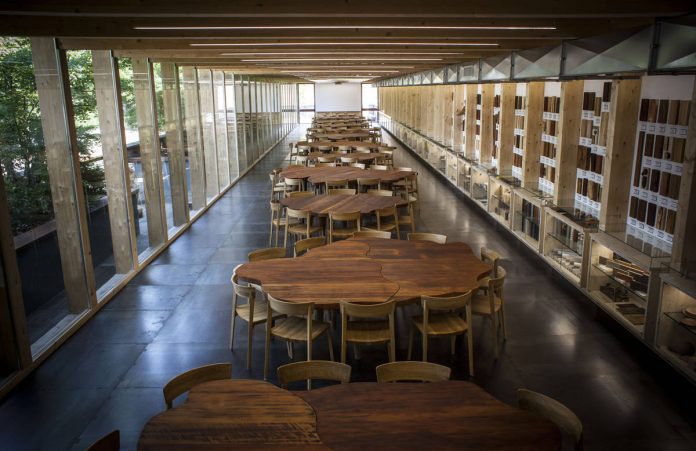Once upon a time there was a Showroom, followed by a Museum of Wood. And now, the trilogy concludes with the latest chapter, Pangea Lab. Riva Center by Riva 1920 is undergoing continuous evolution, flux and growth. It is located in Cantù, a city which is already home the company’s four production sites and its headquarters. Just like nature itself, or the very trees the brand aims to protect and promote with utmost respect and rigorous passion, aware of their value and the immense value the constitute.
This philosophy permeates every single of the brand’s cultural and production projects, while also guiding the creation of the new area on the second floor of the Riva Center, inaugurated on Tuesday evening in a convivial and family ambience.
Pangea Lab – a direct reference to the single original continent which existed at the dawn of time – is scheduled to host the Pangea table, symbol of Expo 2015, designed by Michele De Lucchi and positioned inside the Zero Pavilion, curated by Davide Rampello, for the entire duration of the Universal Exhibition.
The table features a 80 sqm surface made in Kauri, a millennial wood from New Zealand’s subsoil, consisting of 19 profiled pieces and supported by 271 legs made from Briccola, oak rods recovered from the Venice Lagoon.
This monumental piece of design and nature is framed by a xylotheque featuring woods from all around the world, along with a selection of natural materials: leathers, marble, metals, glass and fabrics, developed in collaboration with over 65 local companies.
The space is naturally open to contamination and collaboration, indeed it is physically open to anyone who wishes to visit, especially students and architects, for whom the lab has been specially designed. Here visitors are free to discover new materials and touch raw materials which are crafted to create interiors. This is the important training project promoted by Maurizio Riva, which in addition to Pangea Lab, also foresees visits to production labs of companies in the furnishing supply chain, in order to shorten the distance between the academic, artisan and industrial worlds and rediscover a heritage of processes and skills which have made the sector.




